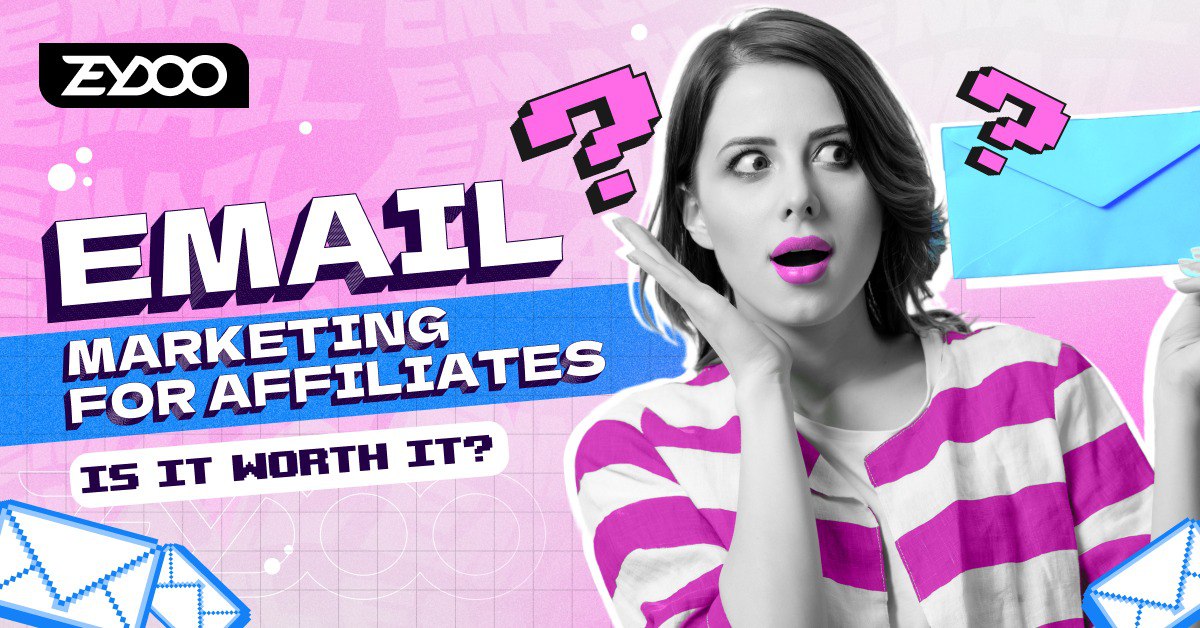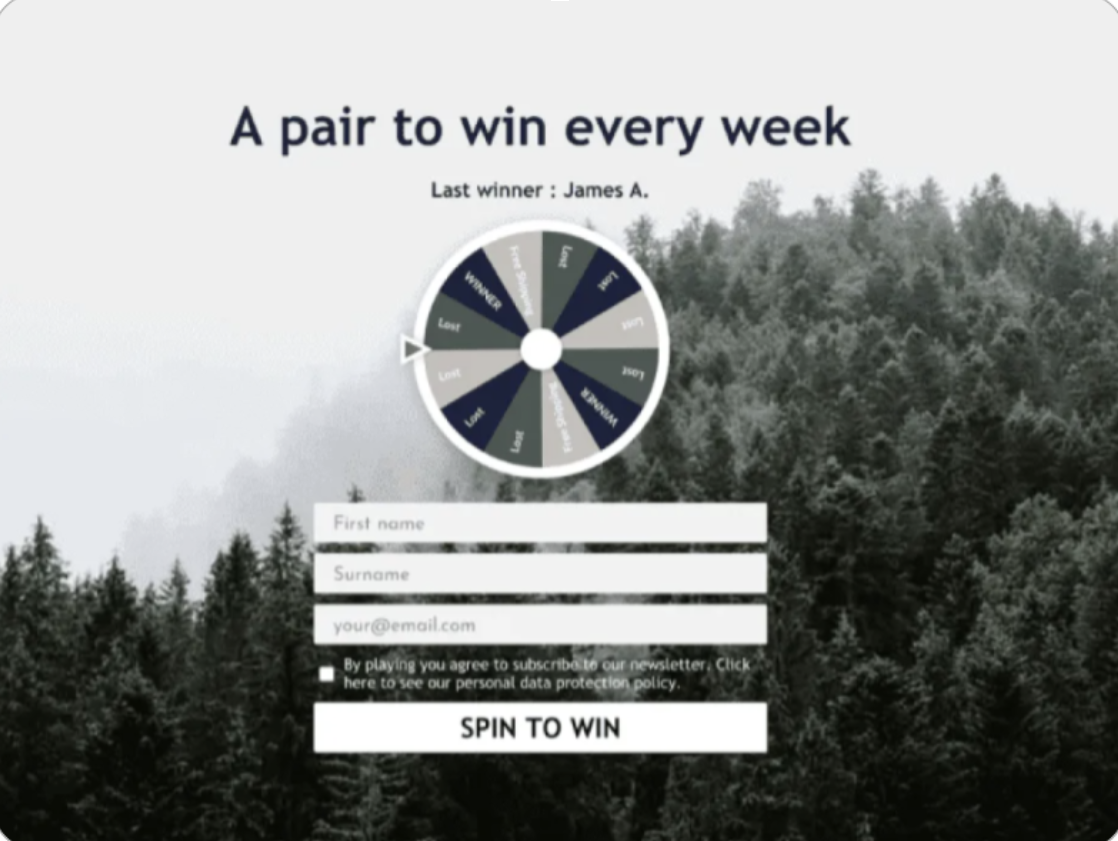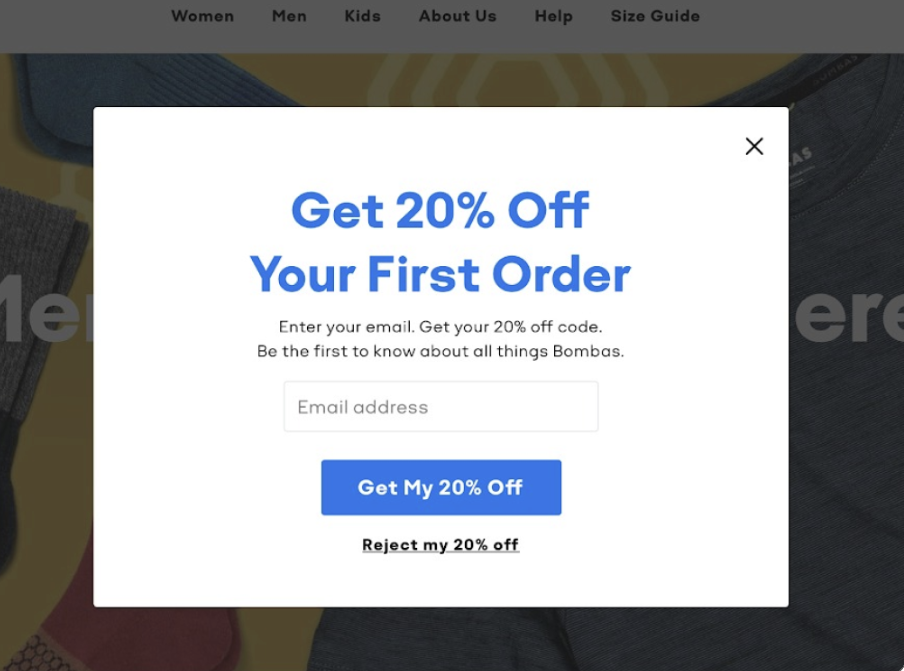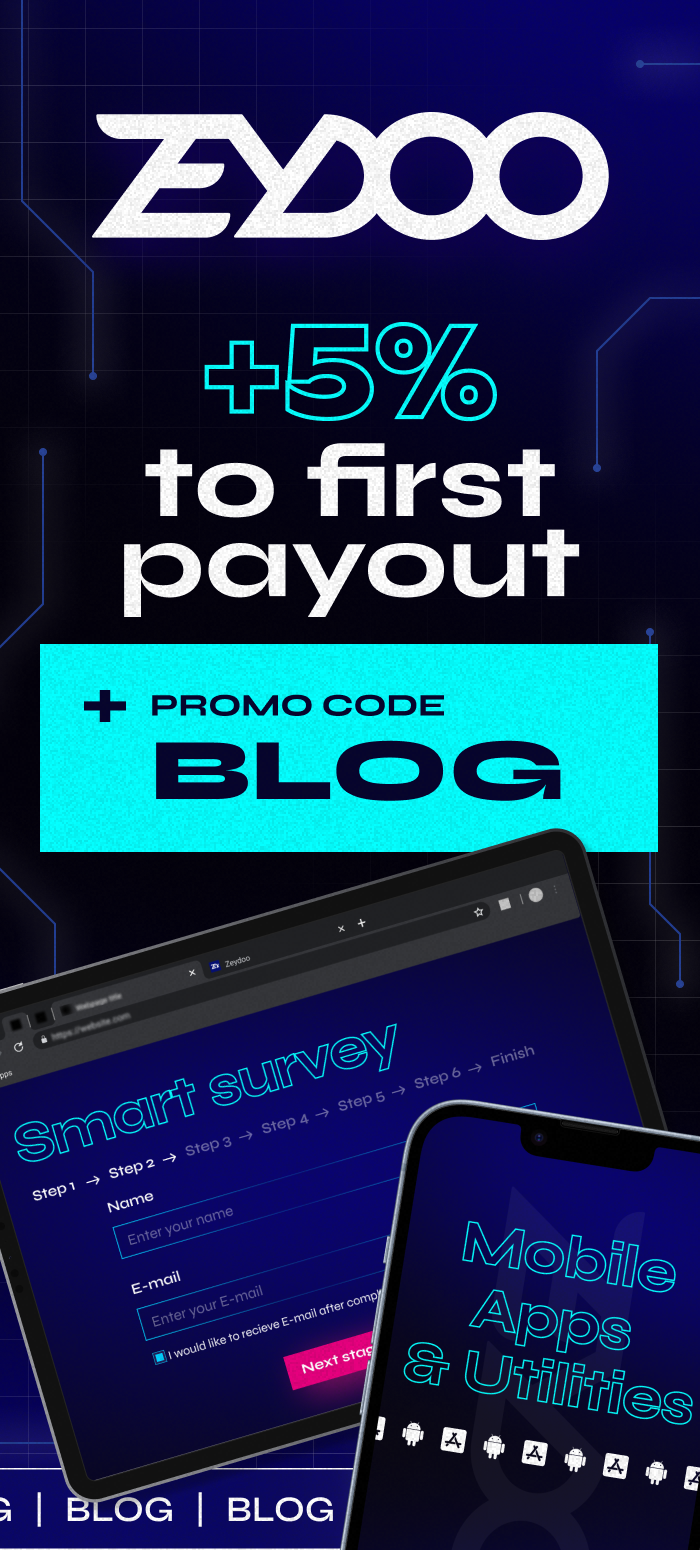Are you tired of constantly tweaking your media buying and spending money on ads with unpredictable results?
If you answered “yes!”, then affiliate email marketing might be a new channel to try!
Table of contents
What is email affiliate marketing?
Affiliate email marketing is when an affiliate runs an email newsletter or series of emails with affiliate links.
It’s a reliable alternative marketing method that’s been around for 40 years, and it’s still one of the most effective channels, boasting an average ROI of $36 for every $1 spent.
Unlike search engines, which can penalize affiliate-heavy websites, or ads, which can vary in effectiveness, email affiliate marketing allows you to reach your audience without intermediaries.
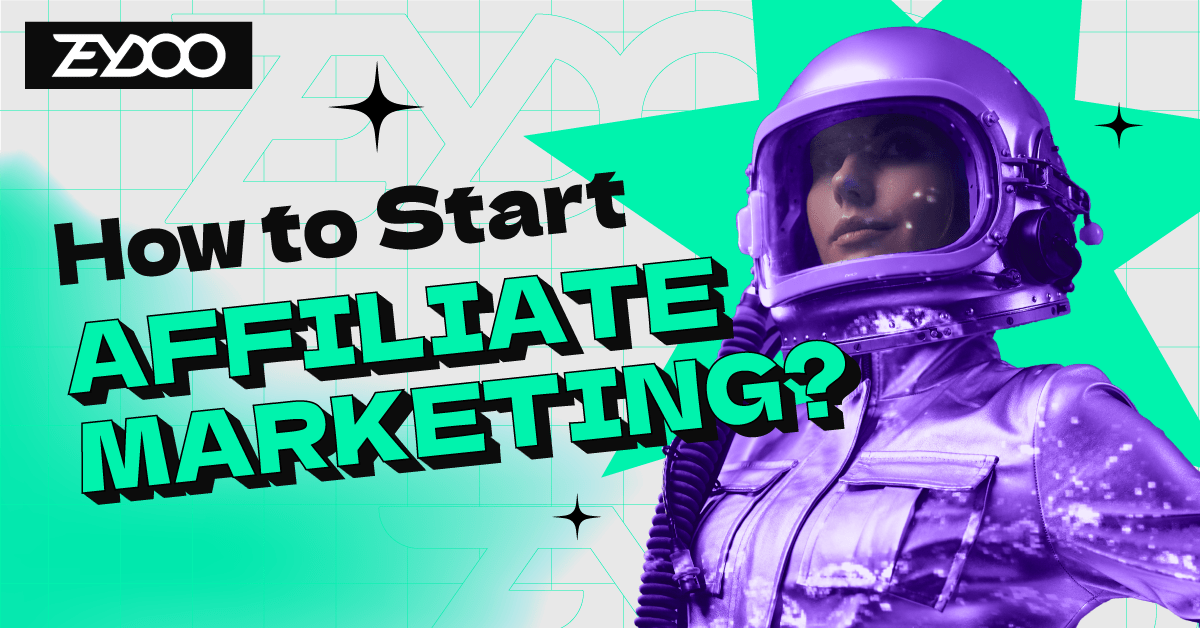
How effective is email marketing at converting customers?
Statistics show that email marketing is a powerhouse. 60% of consumers make purchases because of an email they received, and email marketing generates 40 times more customers than Facebook and Twitter combined.
If these numbers convince you, keep reading: In this article, we’ll guide you through everything you need to get started with email affiliate marketing, from setting up your tech to building your list and crafting effective email sequences.
Let’s get started!
How to start affiliate email marketing
Starting with affiliate email marketing takes a little bit of work, but the rewards are worth it. If you’re starting from 0, you’ll need to prepare your tech and your email list for the best results.
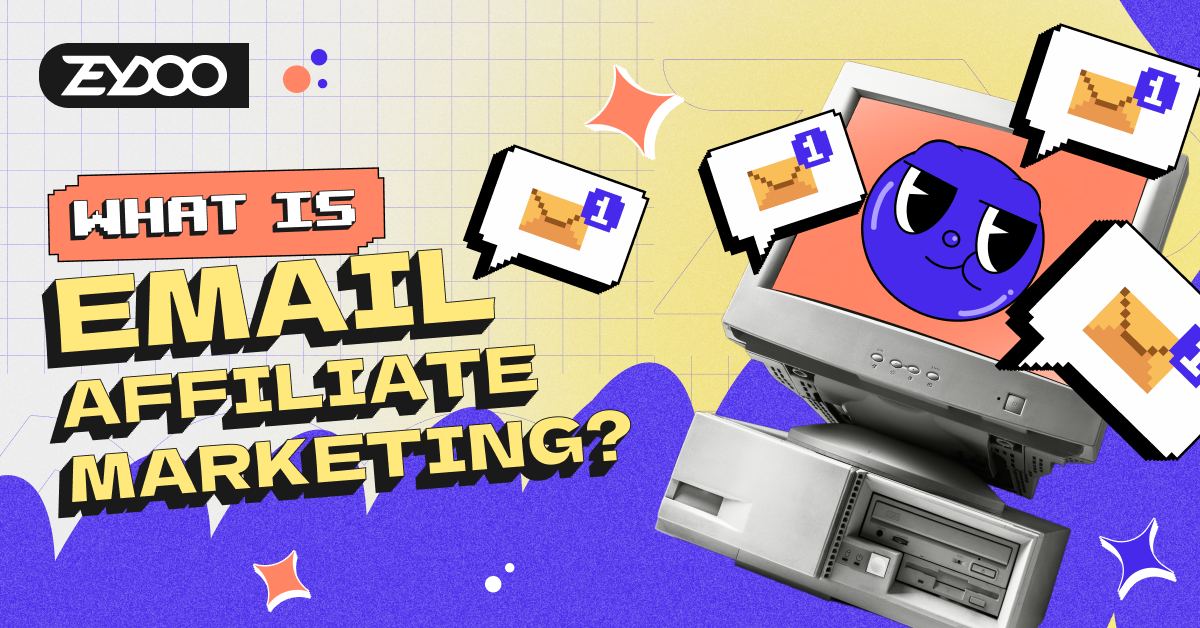
Tech setup
Your tech setup is like the back-end of your email marketing operation. It includes your domain name, IP provider, email marketing provider, and authentication with email services.
Here’s what you need to do to set up your email marketing tech:
1. Choose the right tools
- Email Service Provider (ESP)
- What it is: An ESP is a platform that helps you send and manage email campaigns.
- Why it’s important: A good ESP provides features like automation, segmentation, analytics, and deliverability support.
Considerations: Look for an ESP within your budget, with a solid reputation, easy-to-use interface, and features that fit your needs. Popular choices include Mailchimp and SendGrid.
- Domain
- What it is: Your domain is your website address, and you’ll use a dedicated domain for your email marketing efforts.
- Why it’s important: Using a dedicated domain helps you build a sender reputation separate from your main business domain.
Considerations: Choose a domain name that is easy to remember, brand-aligned, and not previously used for spammy activities.
- IP Address
- What it is: An IP address is a unique string of numbers that identifies a device on the internet. For email marketing, you’ll use either a dedicated or shared IP.
- Why it’s important: A dedicated IP gives you control over your sending reputation, while a shared IP spreads the reputation risk among multiple users.
Considerations: If you send large volumes of emails, a dedicated IP is usually better. For smaller volumes, a reputable ESP’s shared IP pool can be sufficient.
2. Consider authentication
Authentication
- What it is: Email authentication involves verifying that your emails are genuinely from you, protecting against spoofing and phishing.
- Why it’s important: Authentication improves deliverability and builds trust with both email providers and recipients.
- Key protocols to authenticate
- Benefit: Helps prevent email spoofing.
- DKIM (DomainKeys Identified Mail): Adds a digital signature to your emails, verifying they haven’t been altered in transit.
Benefit: Increases email integrity and trust. - DMARC (Domain-based Message Authentication, Reporting & Conformance): Provides instructions to email providers on how to handle emails that fail SPF or DKIM checks.
Benefit: Gives you control over how suspicious emails are treated and helps monitor and protect your domain. - SPF (Sender Policy Framework): Ensures your emails are sent from authorized servers.

3. Set up reputation monitoring
Reputation monitoring
- What it is: Reputation monitoring involves tracking the health and performance of your email-sending practices for high deliverability rates.
- Why it’s important: Maintaining a good sender reputation is crucial for keeping your emails out of spam folders.
- Tools to use
Google Postmaster Tools: Provides data on your email’s performance with Gmail users.
Sender Score: Offers a reputation score based on your sending history.
Postmark: Monitors and reports on your sender reputation.
4. Warm up your IP/domain
Warming up
What it is:
A sudden spike in email volume from a new IP or domain can trigger spam filters, hurting deliverability.
Why it’s important: How to do it:
- Start slowly: Begin by sending emails to your most engaged subscribers. This initial engagement helps establish a good reputation.
- Gradual increase: Slowly increase your email volume over several weeks. For example, start with 50 emails per day and double this number every few days if engagement remains high.
- Monitor performance: Keep an eye on open rates, bounce rates, and spam complaints to adjust your sending strategy as needed.
Setting up your tech properly from day one will save you time and money later. ISPs and email providers penalize marketers with poor tech setups by restricting their deliverability and placing them on blacklists. A strong tech setup means better results later!
List setup
Once you’ve set up your tech you can focus on your email list.
Building an email list is more than just collecting email addresses; it’s about gathering key information that will help you create effective campaigns down the road.
Here’s how to do it right:
1. Decide what data to collect
First, let’s talk about what you should collect. Names and email addresses are a given, but you should gather demographics and preferences, too. This data will help you segment your list and tailor your messages to specific groups, making your campaigns more relevant and engaging.
2. Don’t buy email lists
Don’t even think about buying email lists! Purchased lists can harm your sender reputation and violate data protection regulations. Instead, focus on getting explicit consent from subscribers. This means they should actively opt-in to receive your emails.
3. Comply with data protection laws
Make sure your list-building practices comply with laws like GDPR (General Data Protection Regulation) in the EU, CAN-SPAM Act in the US, and CASL (Canada’s Anti-Spam Legislation) in Canada. These regulations require that you get clear permission to email someone and provide a way for them to unsubscribe easily.
4. Start collecting email addresses
Now that you know what data you want to collect you can start building out your list. If you already have customer emails, you can immediately build a clean list by sending them an email to sign up for your newsletter. Otherwise, you can use other methods to get subscribers: Lead magnets, pop-ups, opt-in forms, social media promotion, and even ads.

6 Ways to build your email list
As mentioned, there are a few different ways to build your email list –– let’s take a closer look at how they work.
Landing pages and lead magnets
Lead magnets are valuable resources you offer in exchange for someone’s email address. These can be promo codes, downloadable materials (eBooks, webinars, other content), exclusive offers, and whatever else you want.
It’s a good idea to couple your lead magnets with specific landing pages to drive conversions more effectively. For example, if you create a landing page that is search-engine optimized for the phrase “how to start a small business”, you can embed a lead magnet for an e-book on the topic.
Finally, it’s useful to test different kinds of lead magnet designs on different pages. This approach caters to different interests and segments of your audience.
For example, one page could offer a free eBook on business ideas, while another might offer a weekly giveaway entry. Different formats keep things interesting and appeal to a broader audience.
Pop-up forms
Pop-up forms are windows that appear on your site, prompting visitors to enter their email addresses. They’re a great way to capture attention quickly.
Like lead magnets, it’s useful to run tests on your pop-up forms for the best results. Testing different designs, messages, and triggers helps you find the most effective combination. Some visitors might respond better to a simple discount offer, while others might prefer a content download.
For the best visibility, show pop-ups shortly after a visitor lands on your site. Immediate pop-ups capture attention before visitors get distracted or navigate away.
Opt-in forms in key places
Placing opt-in forms in strategic locations on your website increases their visibility and capture rates. Just like lead magnets and pop-up forms, it’s important to test different locations for the best results.
Here are some commonly used locations for opt-in forms:
- Footer: This is a consistent location across all pages, making it easy for visitors to find.
- Navigation bar: An opt-in form here ensures it’s seen by everyone who visits your site.
- Above the fold on the homepage: This prime location grabs attention immediately.
- High-engagement sections: Embedding opt-in forms within popular articles or blog posts can capture the interest of engaged readers.
How to launch your first affiliate email marketing campaign
So, you’ve set up your tech and built your email list.
Now what?
It’s time to launch your first campaign!
This is where the magic really happens. Most likely, your newsletter subscribers are excited to get some great content, and your first campaign is your chance to drive serious engagement.
Here’s how to launch your first affiliate email marketing campaign without a hitch.
Create audience segments
Remember all the data you collected while building your list?
Now it’s time to put that data to work. Segmenting your list can significantly boost your campaign’s effectiveness by reaching the right people at the right time with the right content.
Why segment your email list?
- Reduce costs: By sending targeted emails, you only reach the people most likely to be interested, saving on unnecessary sending costs.
- Better results: Targeted emails are more relevant to recipients, leading to higher engagement rates.
- Increased safety: Segmenting can also help reduce spam complaints by ensuring your emails are welcomed by ISPs and email providers.
How to segment your email list
This largely depends on the data you collect and the features offered by your ESP. In general, the three most effective ways to segment your list are:
- Behavior: Group subscribers based on their interactions with your emails and website.
- Preferences: Use the information subscribers provided about their interests.
- Demographics: Segment by age, location, gender, etc.
Consider also performing some list hygiene on your list when segmenting. Remove inactive and spam email addresses to make sure you only send emails to engaged subscribers. This improves your deliverability and makes sure you don’t waste resources on uninterested contacts.
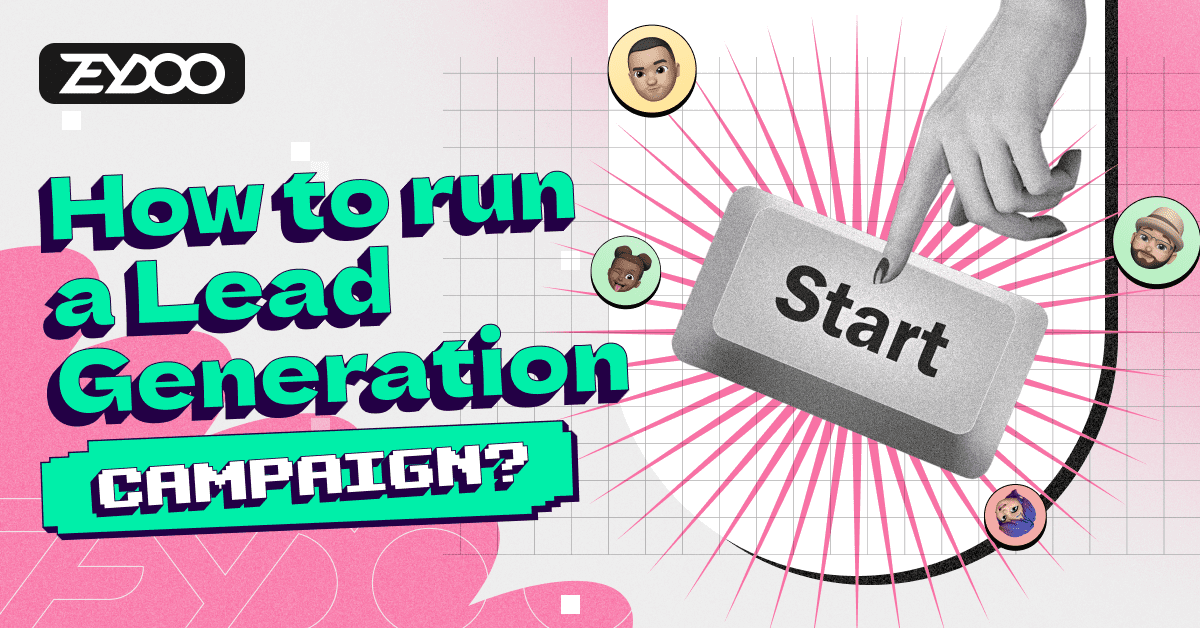
Set up sequences
Next, you’ll want to create email sequences to automate your engagement process. An email sequence is a series of emails that are sent out automatically on a schedule depending upon the actions of the subscriber.
Most often, the first email sequence a subscriber will receive is a welcome sequence. This sets the tone for your relationship with new subscribers.
Here’s an example of a welcome email sequence:
- Email 1: Welcome email introducing yourself and what they can expect.
- Email 2: Talk about your audiences’ pain points.
- Email 3: Offer solutions with valuable resources or content.
- Email 4: Follow up on the solutions with an affiliate link that is relevant to the topic.
- Email 5: Share more thoughts and content on the subject.
- Email 6: Finally, share more benefits and solutions with an embedded affiliate link
Warm up your IP/Domain
As we explained in the Tech Setup section, warming up your IP or domain is important to keep a clean sender reputation. Combine this with your welcome sequence to build a strong sender reputation.
Example warm-up schedule:
- Week 1: Send to 50 engaged subscribers daily.
- Week 2: Increase to 100 subscribers daily.
- Week 3: Double to 200 subscribers daily, and so on.
Remember, don’t rush this process, or you’ll risk getting blacklisted as a spam sender by ISPs.

Analyze and test your emails
Start analyzing your welcome sequence as soon as it’s live. Look at open rates, click rates, and engagement metrics.
You can then use this data to place subscribers into the most appropriate sequences based on their interactions. Some ESPs offer automation features to streamline this process.
When it comes to testing, you can run A/B tests and multivariate tests on almost every aspect of your emails:
- Subject line tests
Experiment with different lengths, tones, and emojis to see what resonates best.
- Email design tests
Test various layouts and designs to find the most visually appealing format for your audience.
- Body copy tests
Try different messaging styles and lengths to see what gets the best response.
- CTA tests
Test different call-to-action buttons, text, and placements to maximize clicks.
- Time of day tests
Send emails at various times to determine when your audience is most responsive.
- Frequency tests
Adjust how often you send emails to find the optimal balance between staying top of mind and not overwhelming your subscribers.
Quick tips for the best results
You’ve launched your campaign and are starting to see some results.
But how do you keep that momentum going and make sure your email marketing efforts continue to pay off?
Here are some quick tips to help you drive the best results from your email contacts:
- Consider price
Email marketing costs money, so you need to keep an eye on expenses. While conversions are great, if running your newsletter costs more than what you earn from sales, it’s not worth it.
You’ll need to budget for an Email Service Provider (ESP), which can vary in price based on the number of subscribers and features you need. Additionally, there might be costs for creating content, designing emails, and possibly even automation tools. Understanding these costs upfront will help you allocate your resources effectively so your conversions remain profitable. - List quality is more important than quantity
It might be tempting to focus on growing a massive list but remember: a list of a million uninterested contacts is far less valuable than a smaller, engaged audience. Aim to attract subscribers who are genuinely interested in your content and offers. These engaged contacts are more likely to open your emails, click through to your website, and make purchases. Quality always trumps quantity in email marketing. - Don’t oversell
Selling in every email leads to subscriber fatigue.
Instead, aim for an 80/20 split:
80% of your emails should provide valuable, helpful content, and 20% can be sales-oriented. This balance keeps your audience engaged and builds trust, making them more receptive when you do promote your products or services.

- Remember to iterate and improve
Email marketing is a continuous process of learning and optimizing. Regularly analyze your campaign results and make adjustments based on what you learn. Run A/B tests on subject lines, email designs, content, and send times to see what works best. Over time, these incremental improvements will lead to significantly better performance. - Protect your list
Keeping your email list secure and private is crucial. Use double opt-in methods to verify new subscribers and ensure you’re complying with data protection laws like GDPR and CAN-SPAM. Regularly update your security practices to protect against data breaches and maintain your subscribers’ trust. - Avoid spam triggers
To make sure your emails land in the inbox and not the spam folder, avoid using words and phrases that trigger spam filters, such as “free money,” “act now,” or excessive exclamation marks. Also, limit the number of links in your emails and ensure your content is clean and professional. - Ask for feedback!
Your subscribers are a valuable source of information. Conduct regular surveys and polls to gauge their interest in your content and what they’d like to see more of. This feedback helps you tailor your emails to better meet their needs and keeps your audience engaged and satisfied.
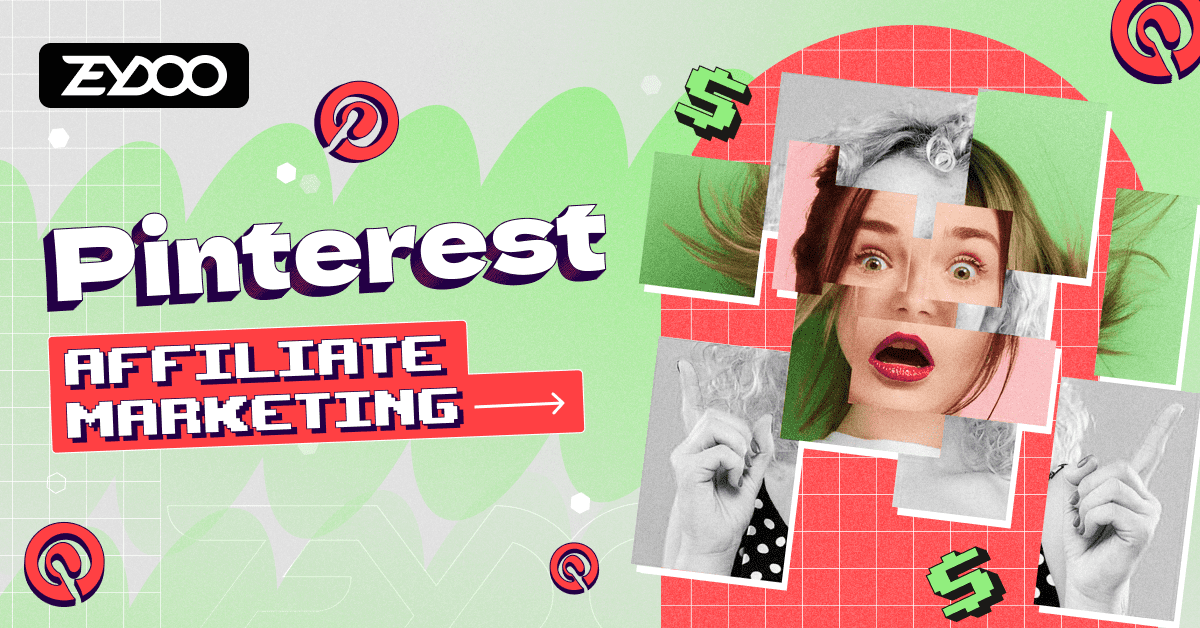
Email your way to success!
With the right setup, you can reach an audience that truly cares about your content and offers. Imagine no longer stressing over SEO tweaks or fluctuating ad costs. Instead, picture a reliable, direct line to your subscribers, building trust and driving steady income.
It’s all possible with email marketing.
Get started with your affiliate email marketing strategy today!
